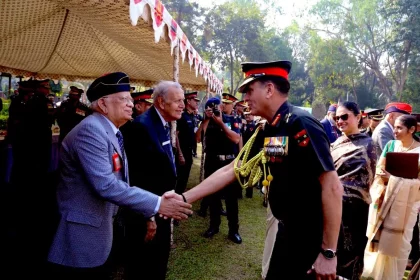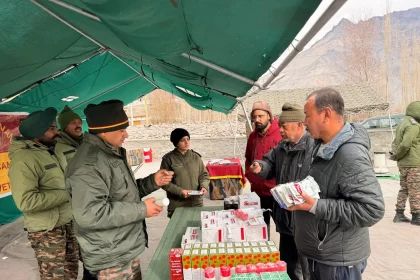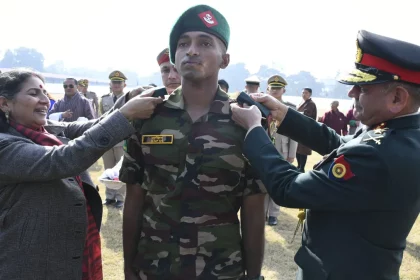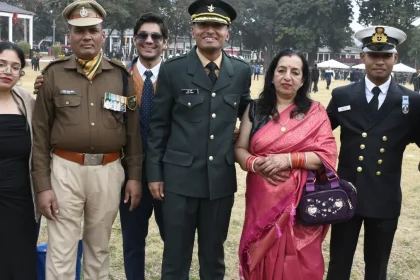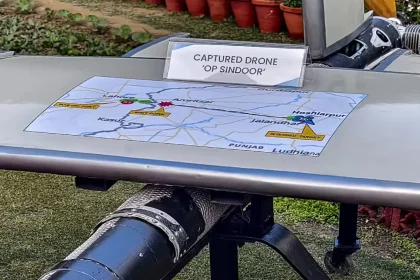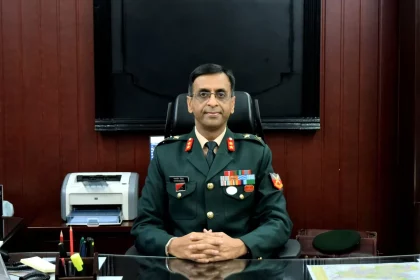Lt Gen Dhiraj Seth Commemorates Vijay Diwas 2025 in Pune
Honouring Heroes: Southern Command Pays Tribute on Vijay Diwas 2025.
Indian Army Conducts Veterinary Camp in Nubra Valley
Promoting Animal Health and Supporting Local Communities in Ladakh.
Meet Lt Safin Ashraf: Bangladeshi Officer Graduates from IMA as Best Foreign Cadet, Calls India a True Friend
Bangladeshi Cadet Lt Safin Ashraf Graduates from IMA, Showcasing Excellence, Leadership, and India-Bangladesh Military Friendship.
Meet Lt Rajat Joshi: Haldwani Native Continues Family Legacy by Joining Indian Army
Continuing a Proud Family Tradition: Lt Rajat Joshi Commissioned into Indian Army.
Army Displays Made-in-Turkey Kamikaze Drone Fired from Lahore Shot Down During Operation Sindoor
Turkish-Origin Kamikaze Drone Intercepted as India Showcases Air Defence Strength During Operation Sindoor.
Major General Gaverdhan Singh, SM Assumes Charge as Deputy Commandant & Chief Instructor of OTA Gaya
Seasoned Officer to Mentor and Shape the Next Generation of Indian Army Leaders.

